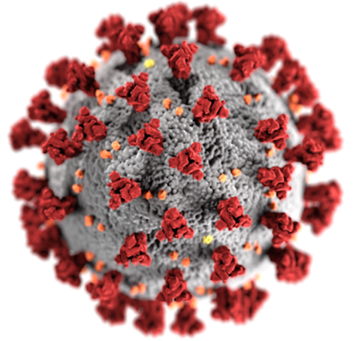Potential therapies for SARS-CoV-2 can be divided into two categories: one directly targets the novel coronavirus, and the other is human-oriented. Viruses must enter the host cell to replicate in order to function. Therefore, antiviral drugs can be designed for a series of targets in the process of virus interaction with cell receptors, gene replication, transcription and translation when the virus invades host cells and completes its life cycle. In addition to the above drug research and development against the virus, we can also take the human body as a guide to find therapeutic drugs for the immune response caused by the virus. In the early stage of viral infection, the human body’s own immunity can be appropriately improved/activated by the activation of interferon or innate immune receptors to fight the virus. For severely advanced/immune hyperactive patients, since patients are attacked by their own immune system, they can consider using immunosuppressive drugs or mechanisms to adjust. In addition, it can also be treated against the mechanism/target where the host and the pathogen interact with each other. Currently, the main treatment methods for the disease include small molecule drugs, biomacromolecule drugs, gene therapy, cell therapy, traditional Chinese medicine therapy, and medical devices. The potential applications of them in the treatment of SARS-CoV-2 are as follows.
Chemical small-molecule drugs: Small-molecule drugs are currently one of the types of drugs that are expected to be used for the treatment of SARS-CoV-2. There are now multiple small-molecule drugs in clinical trials, and their effectiveness and safety against the coronavirus needs to be further verified.
Biomacromolecule drugs: These drugs have high specificity and strong continuity and compliance in the body, but their production cost is high, and because they only act on the cell membrane and outside the membrane and cannot enter the cell, so the target is limited. At present, no specific antibodies have been found to conduct clinical trials in the research of the coronavirus. At the same time, by extracting neutralizing antibodies from the plasma of some recovered covid-19 patients with sufficient concentration of effective antibodies, the potentially harmful components can be removed to treat critically ill patients, but it is unlikely to be promoted on a large scale.
Gene therapy: A disease treatment method developed in recent years. It usually uses transgenic methods to make up for missing functional genes or strengthen gene functions. A variety of methods have been developed, such as precise gene editing. However, there is no gene therapy for the coronavirus. This method is generally for chronic, long-term viral infections, such as gene editing of human cells, so that the pathogens lose the ability to infect the cells, or suppress the virus gene expression through RNA interference.
Cell therapy: Also a disease treatment method developed in recent years. One of the cell treatment methods is to supplement and replace the missing cells, such as the use of stem cells; one is to regulate the body’s immunity by cytokines secreted by the transplanted cells, and this way is not to supplement or replace the cells, and then the transplanted cells will disappear; the other is that the transplanted cells can target and attack specific harmful cells, such as the specific recognition and removal of cancer cells by CAR-T cells. Cell therapy has been studied in the treatment of the SARS-CoV-2, such as the use of mesenchymal stem cells for immune regulation. In the future, we can also consider using specific stem cells for tissue repair and regeneration; organoids derived from stem cells can be used for disease modeling and drug screening.
Medical device treatment: In addition to drug treatment, respiratory support treatments that rely on medical devices, such as oxygen therapy, invasive mechanical ventilation, extracorporeal membrane oxygenation (ECMO), and circulation support, also played an important role in the treatment of severe and critically ill patients with COVID-19.
Traditional Chinese medicine treatment: SARS-CoV-2 belongs to the category of “epidemic” diseases of traditional Chinese medicine. Its research idea is different from Western medicine. It does not aim at a specific target but cures the disease in a systematic way. Through in-depth observation and treatment of patients, on the basis of summarizing and analyzing the diagnosis and treatment schemes of traditional Chinese medicine across the country, combing and screening the treatment experience and effective prescriptions in various regions, it is necessary to judge its effectiveness and safety through rigorous clinical trials.

